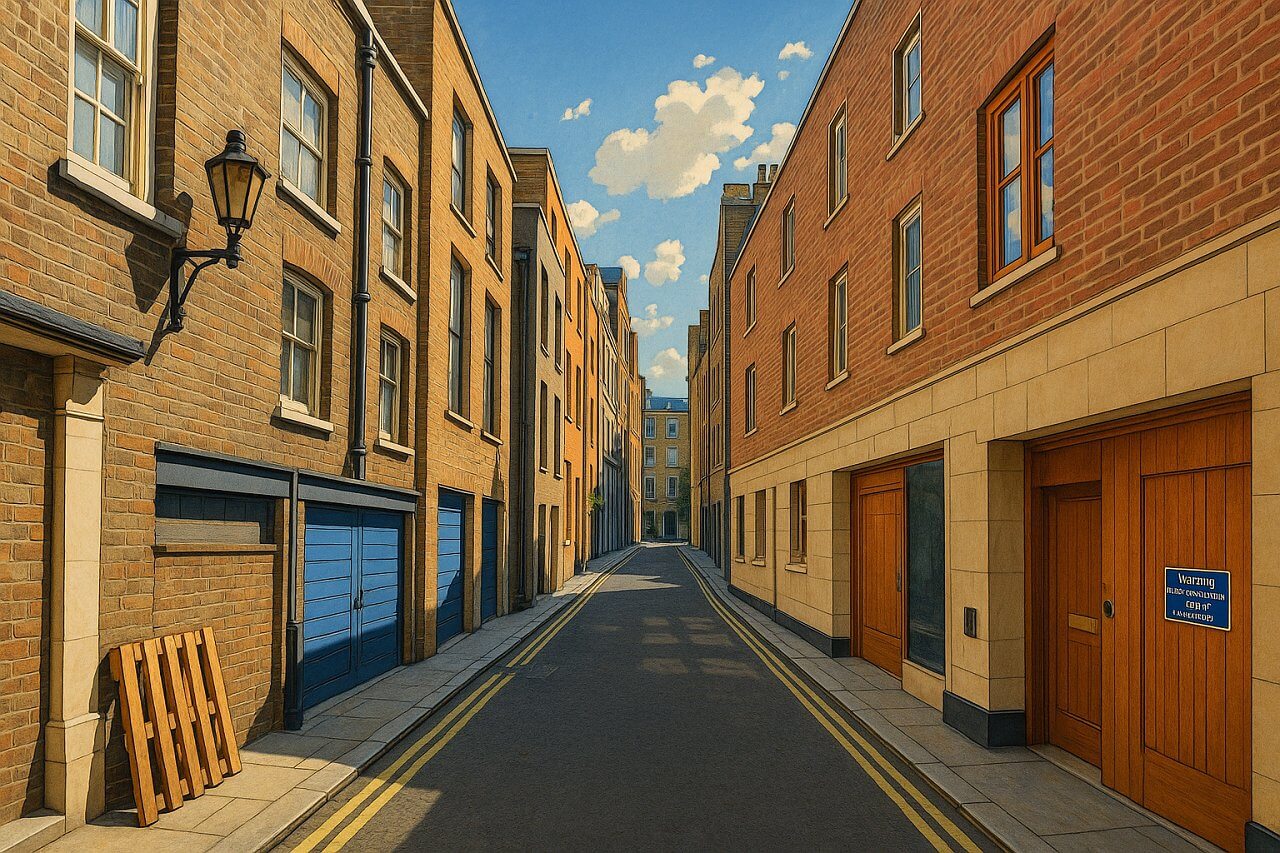
Ormond Yard, London
Ormond Yard is a small, secluded alley nestled in the heart of St James’s in the City of Westminster, central London. This named yard is an unexpected residential backstreet, running just a short stretch between Duke of York Street and the entrance opposite Apple Tree Yard. Though diminutive and easily overlooked, Ormond Yard has a rich history, distinctive charm, and a surprising touch of affluence.
Overview and Location
Ormond Yard is a short alleyway, measuring approximately 62 metres (203 feet) in length. It runs in a roughly north–south orientation, with vehicular access from Duke of York Street heading southwards into the yard. The alley ends in a small courtyard configuration with limited turning space, making it a discreet and quiet location away from through traffic.
Street Character and Use
Despite its modest size, Ormond Yard is home to a handful of properties that use the alley as their official address. These buildings are a mix of converted mews-style properties and low-rise commercial or studio spaces, most discreetly tucked behind plain façades. The yard retains a sense of exclusivity, typical of this part of St James’s, with limited public footfall and a calm atmosphere.
History and Etymology
Ormond Yard dates back to the late 17th or early 18th century, developed during a period when the surrounding St James’s area was being transformed into a fashionable residential and courtly quarter. The yard likely functioned as a service area or stabling ground behind grander houses facing onto major streets.
The name “Ormond” probably refers to James Butler, 1st Duke of Ormonde, an Anglo-Irish statesman and soldier who held important court positions during the reigns of Charles I and Charles II. Naming places after nobles was common practice in this part of Westminster.
Pronunciation: Ormond is pronounced “OR-mənd” (/ˈɔː.mənd/  in IPA). The final “d” is usually silent in colloquial speech.
in IPA). The final “d” is usually silent in colloquial speech.
Surrounding Area and Nearby Sights
Ormond Yard is ideally placed in the refined and historic district of St James’s. Within a short walk, visitors will find:
- St James’s Palace – One of the oldest royal palaces in London, still used for ceremonial functions.
- Pall Mall – The historic gentlemen’s club street, lined with distinguished buildings.
- The Institute of Contemporary Arts (ICA) – Just south near The Mall, offering exhibitions and avant-garde performances.
- Jermyn Street – Renowned for its fine men’s tailoring and British heritage brands.
Green Park and St James’s Park are also within a 10-minute walk, offering welcome green spaces in this built-up district.
Real Estate and Property Values
Despite its low profile, Ormond Yard commands premium property values due to its location. As of early 2025, residential properties in Ormond Yard are estimated to sell for between £2.5 million and £5 million, depending on size and condition. That equates to approximately £3,000 to £4,000 per square foot (£32,000 to £43,000 per square metre), which is in line with or slightly above the average for this prestigious central London area.
The typical property in the yard ranges from 1,000 to 1,800 square feet (93 to 167 square metres), with many of them offering discreet entrances and interiors that have been tastefully modernised behind classic facades.
Transport Links
Underground Stations Nearby
- Green Park Station – Served by the Jubilee, Victoria, and Piccadilly lines. A 5-minute walk west.
- Piccadilly Circus Station – Served by the Bakerloo and Piccadilly lines. Around 6–7 minutes on foot.
- Charing Cross Station – Served by the Bakerloo and Northern lines, with National Rail connections. Approximately a 10-minute walk.
Nearby Bus Stops
The nearest bus stops are located along Pall Mall, Piccadilly, and Regent Street, offering services on:
- Bus routes 6, 9, 14, 19, 38, and 139, connecting to Oxford Street, Hyde Park, Knightsbridge, Trafalgar Square, and more.
Fun Fact
Ormond Yard was once home to the painter and illustrator Feliks Topolski, who maintained a studio in the area. Though now gone, his vibrant depictions of London life remain part of the capital’s artistic legacy.
Quick Facts
- Location: St James’s, City of Westminster, London
- Length: Approx. 45 metres (150 feet)
- Traffic Direction: Southbound, entry via Duke of York Street
- Historical Origin: 17th–18th century; likely served stabling or service use
- Name Origin: Possibly named for James Butler, 1st Duke of Ormonde
- Pronunciation: “OR-mənd” (/ˈɔː.mənd/)
- Character: Quiet, residential mews alley with discreet charm
- Nearby Sights: St James’s Palace, Pall Mall, ICA, Jermyn Street
- Property Values: £2.5–5 million as of 2025; ~£3,000–£4,000 per sq ft
- Nearest Tube: Green Park (Jubilee, Victoria, Piccadilly)
- Bus Routes: 6, 9, 14, 19, 38, 139 from Pall Mall & Piccadilly
- Fun Fact: Once home to artist Feliks Topolski
Map of Ormond Yard, London

Painting of Ormond Yard, London (View image in full size)